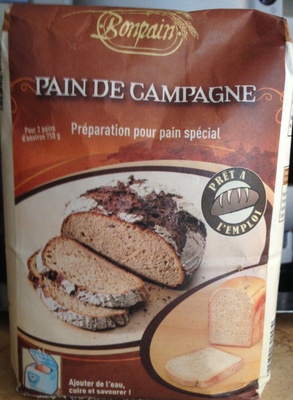Pain de campagne - Préparation pour pain spécial - Bonpain - 1 kg
This product page is not complete. You can help to complete it by editing it and adding more data from the photos we have, or by taking more photos using the app for Android or iPhone/iPad. Thank you!
×
Barcode: 4015801705579 (EAN / EAN-13)
Common name: Préparation pour pain spécial
Quantity: 1 kg
Packaging: Paper
Brands: Bonpain
Categories: Plant-based foods and beverages, Plant-based foods, Flours, Bread flours
Countries where sold: France
Matching with your preferences
Environment
Packaging
Transportation
Report a problem
Data sources
Product added on by jeanbono
Last edit of product page on by packbot.
Product page also edited by musarana, quechoisir.
If the data is incomplete or incorrect, you can complete or correct it by editing this page.









